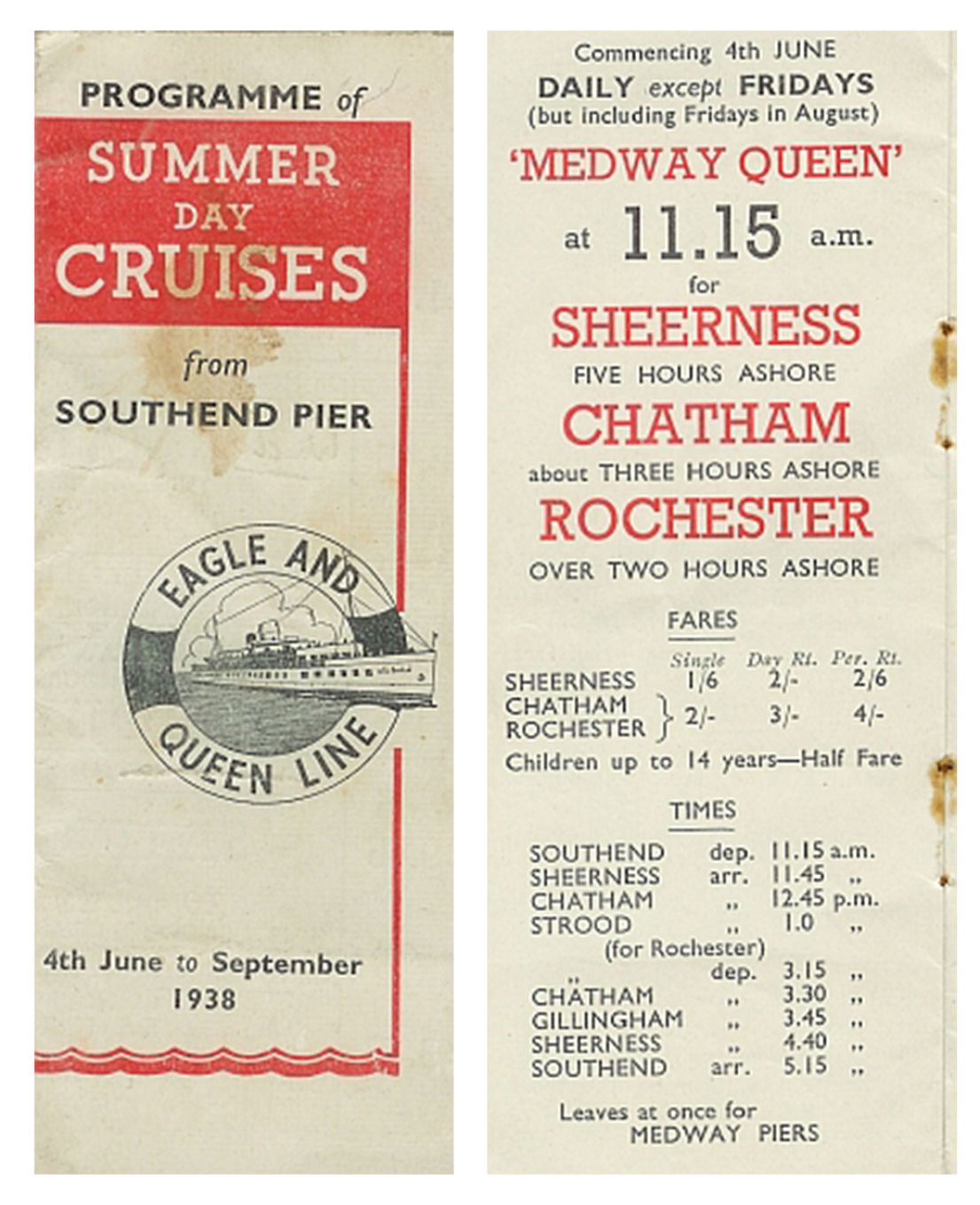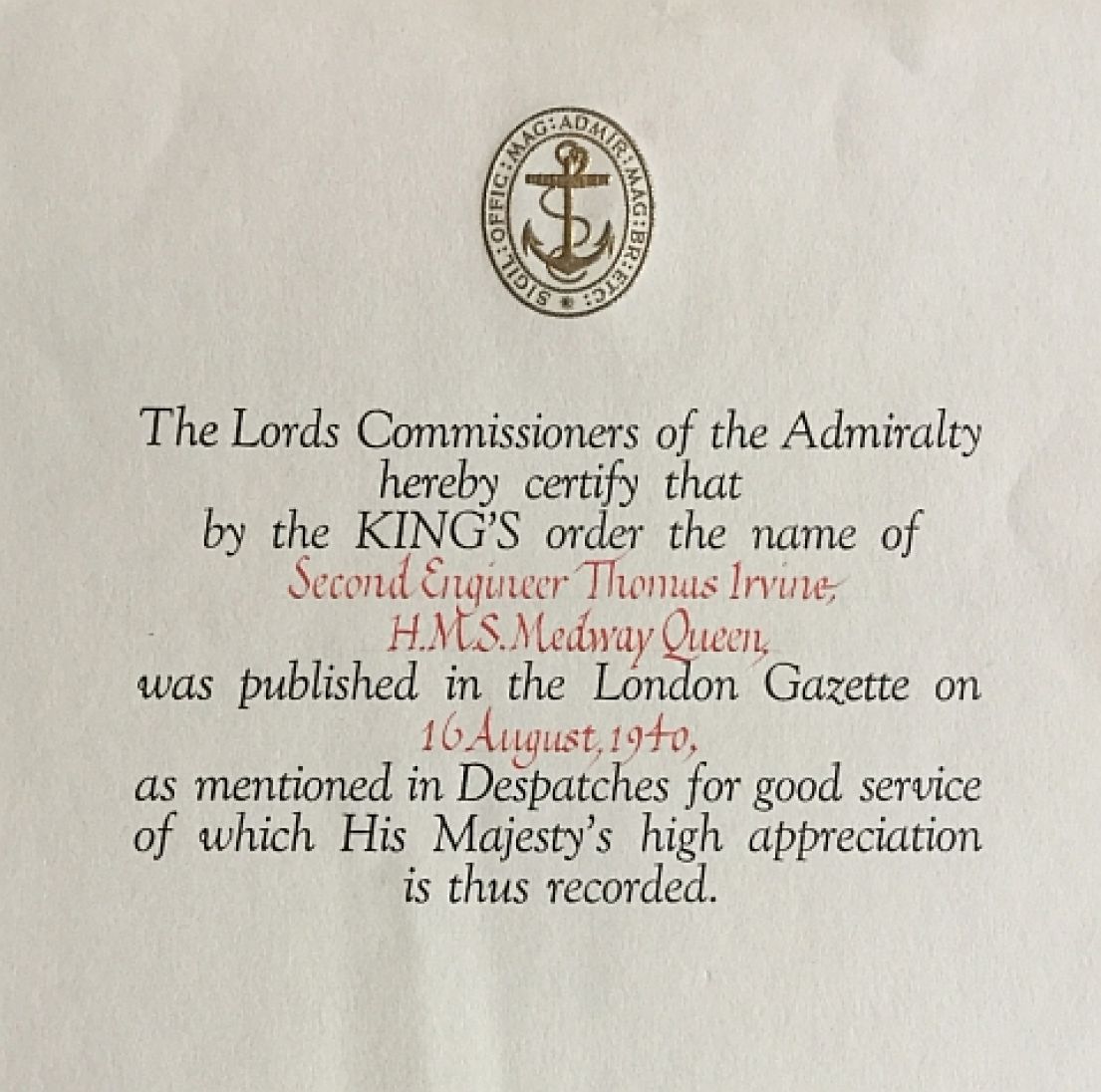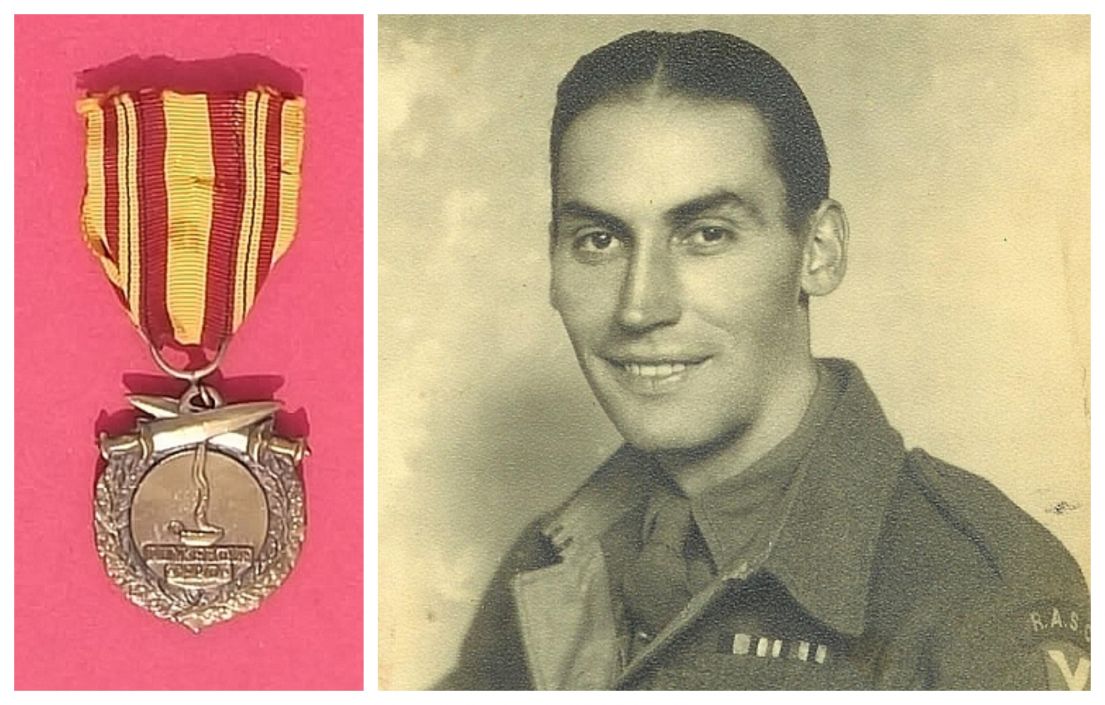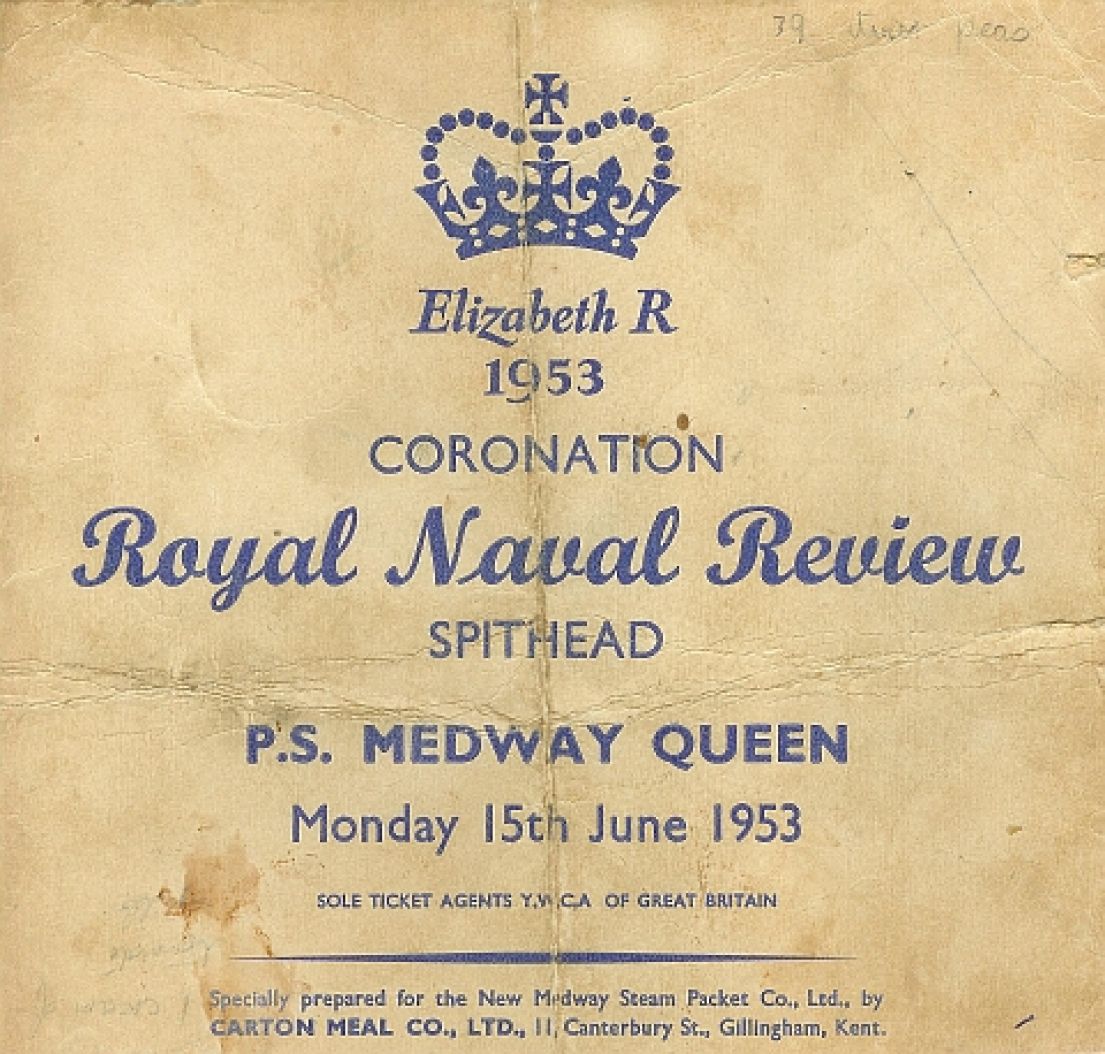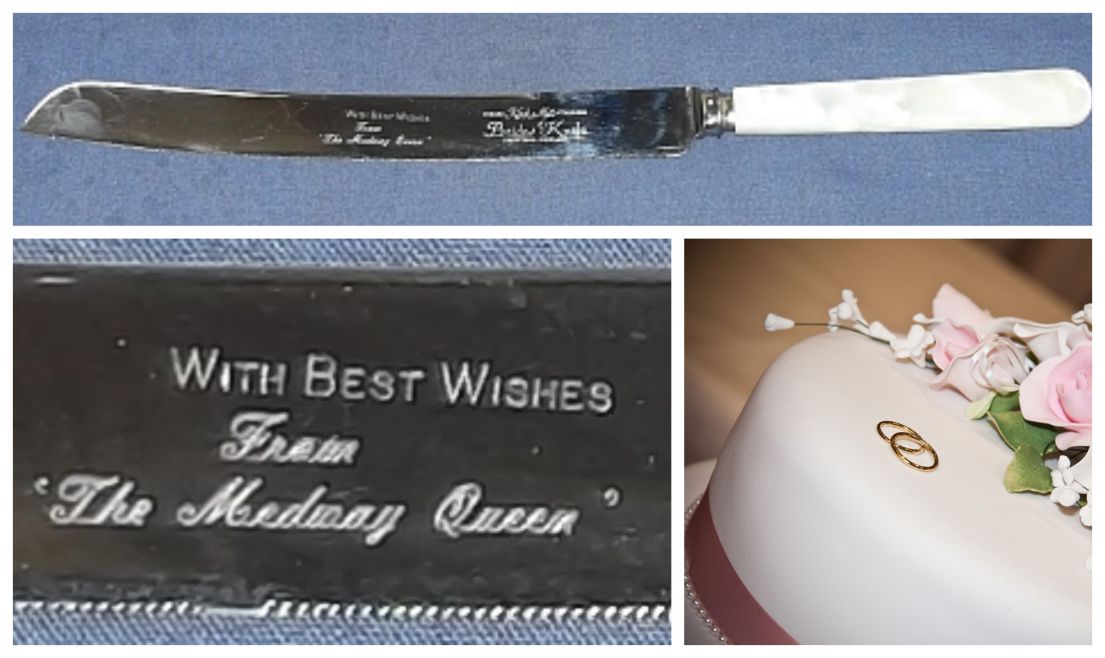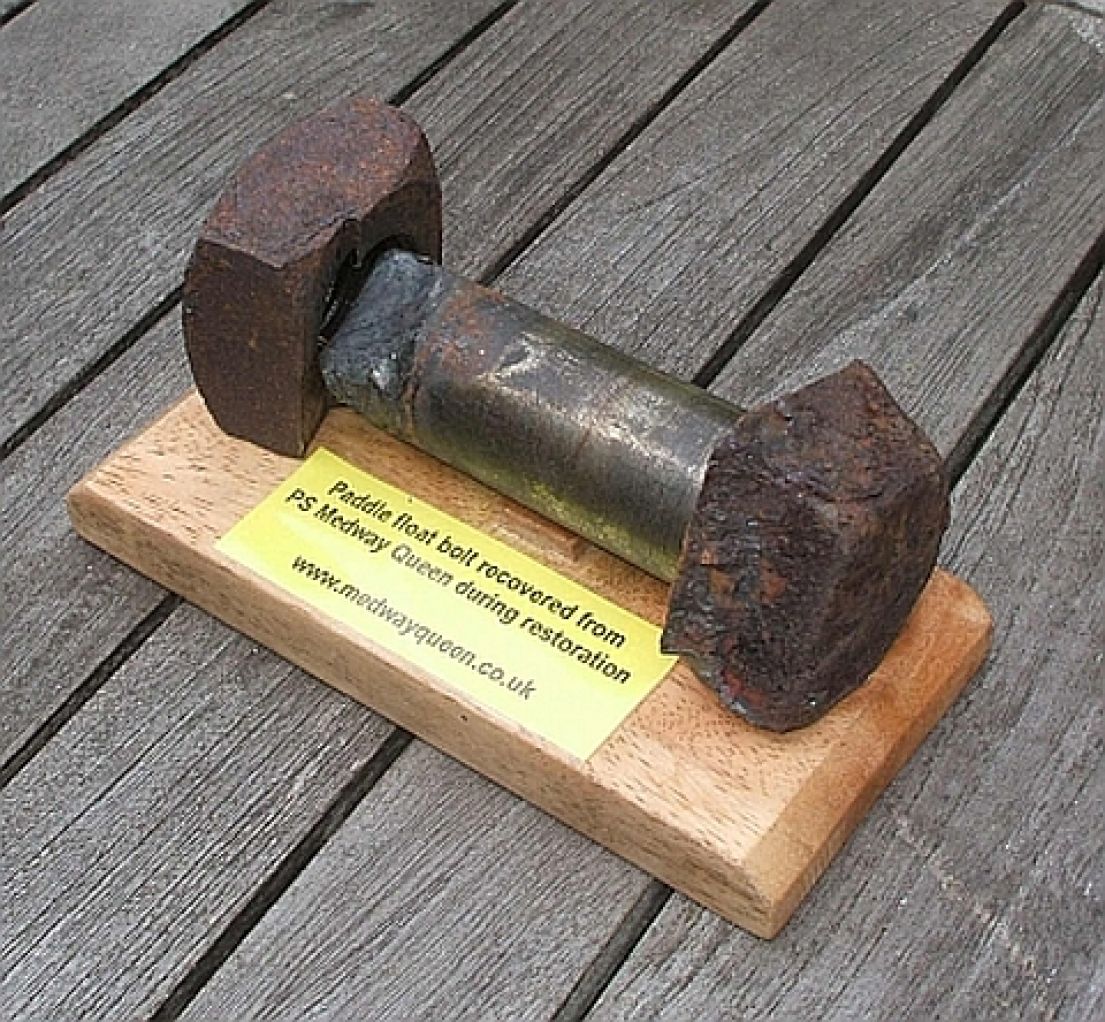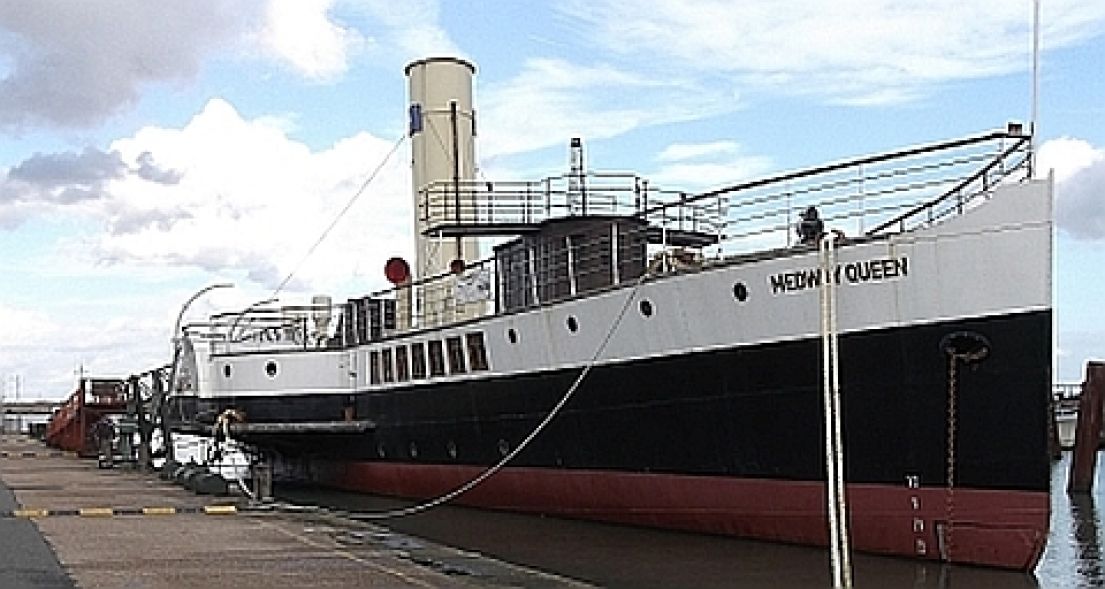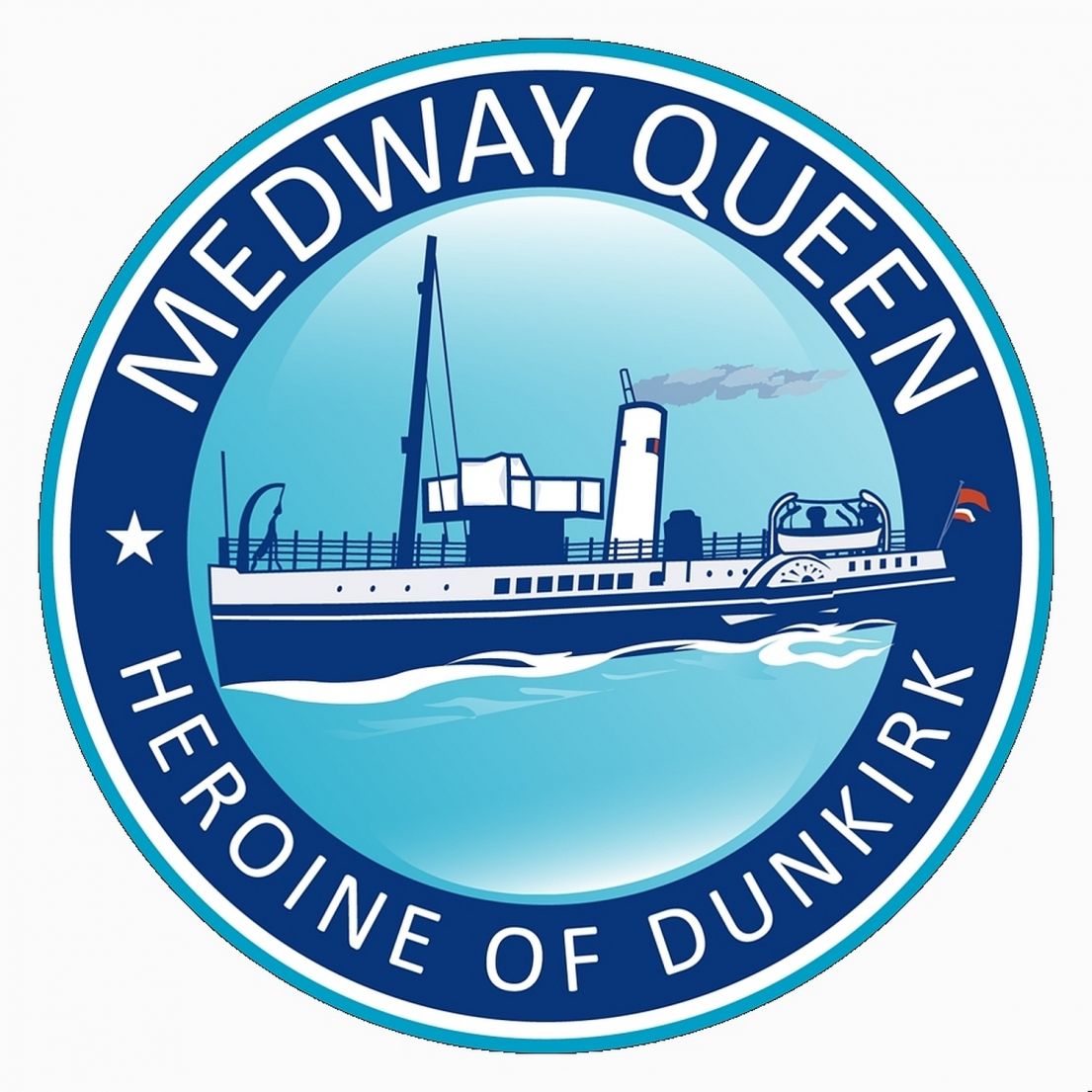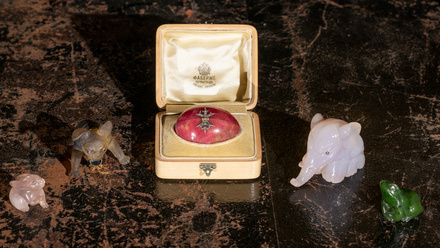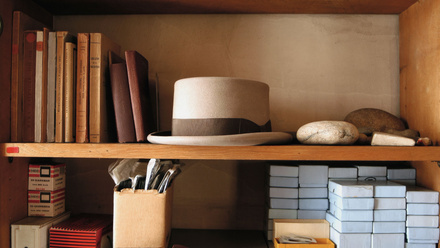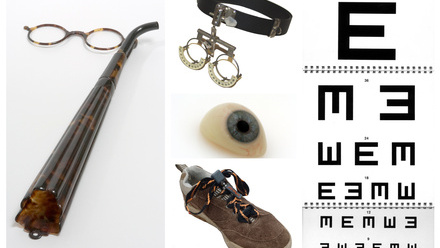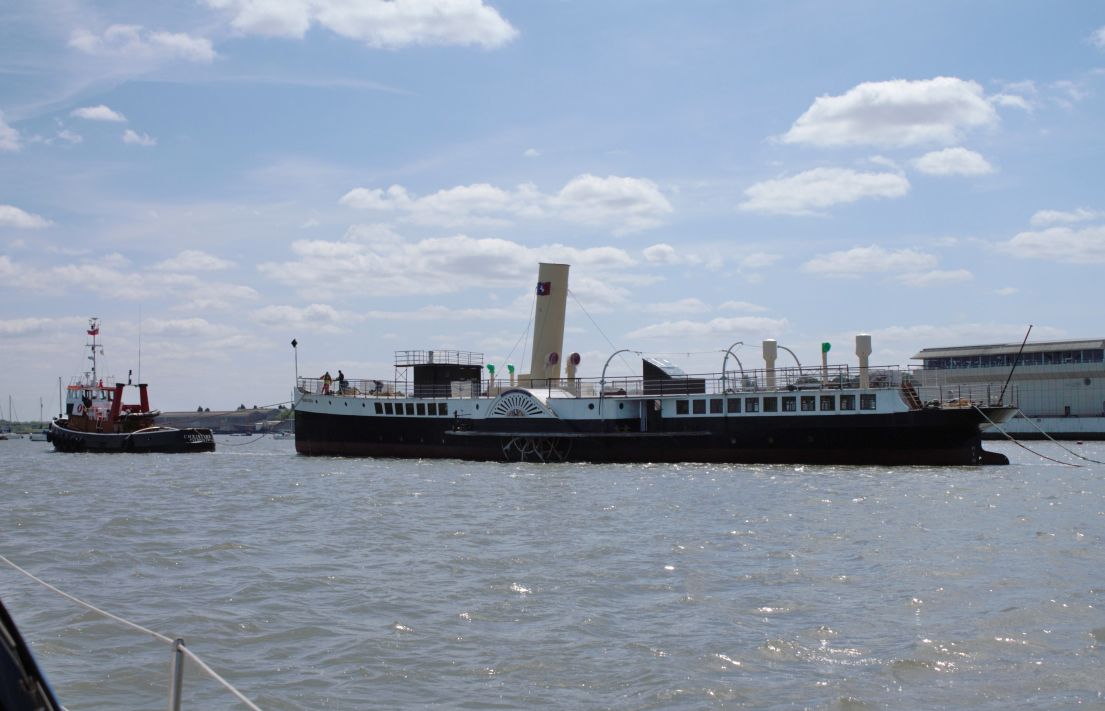
Medway Queen was launched and entered service in 1924. Her usual route was Strood (Rochester, Kent) to Southend and on to Herne Bay. In WWII she became a Royal Navy minesweeper, HMS Medway Queen, and made no less than seven trips during the Dunkirk evacuation.
She is now moored at Gillingham Pier in Kent. Before the Covid-19 restrictions she was undergoing restoration by a willing team of volunteers and was open to the public on Saturdays. As soon as we can safely and legally do so, both of these activities will be resumed, but in the meantime here are 8 curious objects from her history:
1. Summer cruises
2. Minesweeping & sideline fishing
HMS Medway Queen was converted for minesweeping in Deptford and she was commissioned into the Royal Navy in November 1939. Her First Lieutenant was John Graves and this is his dress sword (on long term loan to MQPS). John Graves was posted to HMS Vernon as a training officer after Dunkirk but, aside from a few months as an accommodation vessel in 1943/44, the ship continued minesweeping throughout the war and into 1946. In the latter years she was based at Granton as a training vessel where the accepted routine was to leave harbour in the morning and conduct training exercises out into the North Sea. With the day’s programme completed the ship would turn for home and the crew would drop a trawl net over the stern. The resulting “catch” was sold to chip shops and restaurants near the harbour!

3. Dunkirk crew - Thomas’s certificate
Medway Queen and her crew made seven trips to Dunkirk in eight consecutive nights. The danger and sheer exhaustion must have taken an enormous toll and some, of course, did not manage all seven trips. Medway Queen is a small ship with a small crew but no less than seven of her men were rewarded for their gallantry:
4. Dunkirk crew – Jim’s medal
The Dunkerque Medal was created in 1960 by the town of Dunkerque to commemorate the actions of May and June 1940. It was initially awarded to French personnel but in 1970 it was also awarded to any allied member involved in operation Dynamo between 29th May and 3rd June including the civilian little ship volunteers and those soldiers evacuated.
5. Laundry list or lunchbox?
6. Party time!
In 1966 Medway Queen opened as a static clubhouse and restaurant at a marina on the Isle of Wight. In the evenings the bars were open until 2am (officially) and the atmosphere would have been less sedate! The business flourished and in due course a second ship, PS Ryde Queen, joined her. The restaurant and functions side of the business were moved to the larger ship in 1972 and Medway Queen became a discotheque. This continued until the end of 1974 when the ship fell out of use.
7. Saved from scrappage
Medway Queen was returned to the river Medway in 1984 for preservation. Our society was formed a year later to support that project but in due course was forced to buy the ship from the Official Receiver to save her from scrapping. It took many years of hard work but in 2009 a full rebuild was commenced in Bristol, largely funded by what was then the Heritage Lottery Fund (now National Lottery Heritage Fund).

